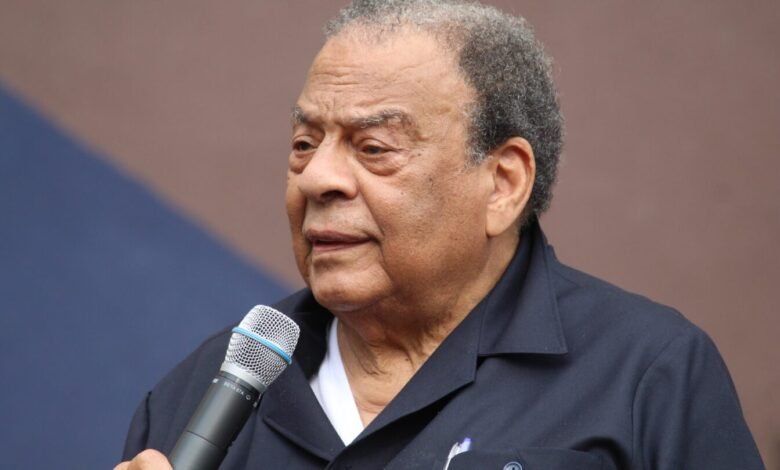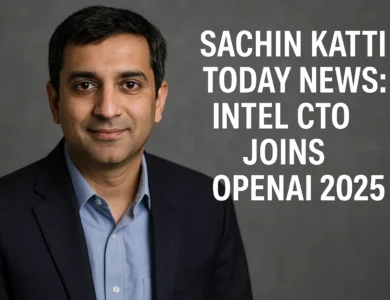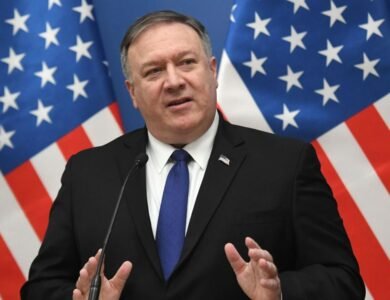
In the annals of American history, few leaders have demonstrated the profound impact and enduring influence of Andrew Young. As a cornerstone of the civil rights movement, former UN Ambassador, and mayor of Atlanta, Young’s leadership philosophy has shaped not only social justice movements but also modern organizational management principles. His journey from a young pastor in rural Georgia to an international diplomat reveals timeless leadership strategies that continue to resonate with leaders across industries today.
Andrew Young’s leadership approach represents a unique blend of moral conviction, strategic thinking, and collaborative spirit that enabled him to navigate some of the most challenging periods in American history. Working alongside Dr. Martin Luther King Jr., Young helped orchestrate pivotal moments in the civil rights movement, including the Birmingham Campaign and the March on Washington. His ability to build bridges between diverse groups, maintain composure under pressure, and inspire others through authentic leadership has made him a study subject for leadership development programs worldwide.
The significance of Young’s leadership principles extends far beyond historical context. In today’s rapidly evolving business landscape, leaders face complex challenges that require the same qualities Young demonstrated: emotional intelligence, strategic vision, collaborative skills, and unwavering commitment to values. His eight core leadership secrets offer a roadmap for modern leaders seeking to create meaningful change while building sustainable organizations.
Understanding Young’s approach to effective leadership provides valuable insights into how leaders can navigate uncertainty, build consensus among diverse stakeholders, and maintain integrity while pursuing ambitious goals. These principles have been tested in the crucible of social change and proven effective across multiple contexts, from grassroots organizing to international diplomacy.
1. Embrace Servant Leadership as Your Foundation
Andrew Young’s leadership style was fundamentally rooted in the concept of servant leadership, a philosophy that prioritizes serving others over personal advancement. This approach became the cornerstone of his leadership methodology and distinguished him from traditional authoritarian leadership models prevalent during his era.
Young’s commitment to servant leadership manifested in his willingness to take on unglamorous tasks during the civil rights movement. While other leaders sought spotlight positions, Young often worked behind the scenes, organizing logistics, mediating conflicts, and ensuring that community voices were heard and respected. This approach earned him the trust and loyalty of both fellow leaders and grassroots activists.
The practical application of servant leadership in Young’s career involved consistently asking, “How can I serve?” rather than “How can I be served?” This mindset shift enabled him to build authentic relationships with diverse stakeholders, from sharecroppers in rural Georgia to heads of state at the United Nations. His leadership approach demonstrated that true power comes from empowering others and creating conditions for collective success.
Modern leaders can apply Young’s servant leadership principles by focusing on developing their team members, removing obstacles that hinder performance, and making decisions based on what serves the greater good rather than personal interests. This approach builds trust, increases employee engagement, and creates sustainable organizational cultures that thrive beyond any single leader’s tenure.
2. Master the Art of Strategic Nonviolence
One of Andrew Young most distinctive leadership qualities was his mastery of strategic nonviolence as both a philosophical stance and a practical tool for social change. This approach required tremendous leadership skills including discipline, strategic thinking, and the ability to maintain moral authority even in the face of violent opposition.
Young’s understanding of strategic nonviolence went beyond passive resistance; it involved carefully orchestrated campaigns designed to expose injustice while maintaining the moral high ground. His leadership strategies included training activists in nonviolent techniques, developing media strategies that highlighted peaceful protesters against violent oppressors, and creating situations that forced opponents to reveal their true nature to the public.
The Birmingham Campaign exemplifies Young’s strategic application of nonviolence. As one of the key organizers, he helped design tactics that would generate media coverage and public sympathy while avoiding actions that could be portrayed as aggressive or threatening. This approach required exceptional emotional intelligence and the ability to remain calm under intense pressure.
Contemporary leaders can adapt Young’s nonviolence principles to modern conflicts by focusing on constructive dialogue, finding common ground with opponents, and using persuasion rather than coercion to achieve objectives. This approach builds long-term relationships and creates sustainable solutions rather than temporary victories that breed resentment.
3. Build Bridges Across Diverse Communities
Andrew Young leadership philosophy emphasized the importance of building coalitions across racial, economic, and ideological lines. His ability to connect with people from vastly different backgrounds became one of his most valuable leadership competencies and enabled him to achieve goals that seemed impossible through single-group efforts.
Young’s bridge-building approach involved actively seeking to understand different perspectives and finding shared values that could serve as foundations for collaboration. During his time as UN Ambassador, he applied these leadership principles to international relations, helping to improve America’s standing with developing nations and facilitating dialogue between conflicting parties.
His collaborative leadership style required exceptional communication skills and the ability to translate complex ideas into language that resonated with different audiences. Young could speak the language of rural farmers, urban professionals, international diplomats, and corporate executives, adapting his message while maintaining consistency in his core values.
The practical implementation of this bridge-building approach involves actively seeking diverse perspectives, investing time in understanding different stakeholder needs, and creating inclusive environments where all voices can be heard. Leaders who master this skill can build broader coalitions, access more resources, and create solutions that have wider support and greater sustainability.
4. Develop Emotional Intelligence and Empathy
Andrew Young emotional intelligence set him apart from many leaders of his generation and contributed significantly to his leadership effectiveness. His ability to read emotional undercurrents, manage his own reactions under pressure, and respond empathetically to others’ concerns enabled him to navigate complex interpersonal dynamics and build lasting relationships.
Young’s empathetic leadership was evident in his interactions with both allies and opponents. He could find humanity in those who opposed him, understanding their fears and motivations without compromising his principles. This approach often led to surprising breakthroughs in negotiations and helped transform adversarial relationships into collaborative partnerships.
His emotional intelligence also manifested in his ability to remain calm during crisis situations. During tense moments in the civil rights movement, when emotions ran high and violence seemed imminent, Young’s presence often served as a stabilizing force that prevented escalation and kept focus on strategic objectives.
Modern leaders can develop similar emotional intelligence by practicing active listening, seeking to understand others’ perspectives before seeking to be understood, and developing self-awareness about their own emotional triggers and responses. This skill set is increasingly valuable in diverse workplace environments and global business contexts.
5. Maintain Unwavering Moral Conviction
Throughout his career, Andrew Young demonstrated that effective leadership requires unwavering commitment to core moral principles, even when such commitment comes at personal or professional cost. His ethical leadership provided a moral compass that guided decision-making and inspired others to maintain their own integrity under pressure.
Young’s moral conviction was tested repeatedly throughout his career, from facing physical violence during civil rights protests to navigating complex political pressures as a diplomat. His consistency in upholding his values earned him respect from both supporters and critics and established his credibility as a leader who could be trusted to do the right thing.
This principled leadership approach required Young to make difficult choices, sometimes accepting short-term losses to maintain long-term integrity. His willingness to resign from positions when his values conflicted with organizational demands demonstrated that true leadership sometimes requires personal sacrifice for the greater good.
Contemporary leaders can apply this principle by clearly defining their core values, communicating these values consistently to stakeholders, and making decisions that align with these principles even when faced with pressure to compromise. This approach builds trust and creates organizational cultures based on integrity rather than expedience.
6. Practice Patient and Strategic Thinking
Andrew Young leadership success was built on his ability to think strategically and maintain patience in the face of urgent demands for immediate action. His strategic leadership approach involved careful analysis of situations, consideration of long-term consequences, and timing of actions for maximum effectiveness.
Young’s patience was not passive waiting but active preparation and positioning for optimal opportunities. During the civil rights movement, he understood that successful social change required careful orchestration of events, public opinion preparation, and strategic timing of key actions. His planning and strategic thinking helped ensure that movement actions had maximum impact and sustainable results.
This strategic patience extended to his diplomatic career, where he worked to improve long-term relationships between nations rather than seeking quick fixes to complex international problems. His visionary leadership focused on creating lasting change rather than achieving temporary victories.
Leaders today can apply Young’s strategic thinking by taking time for thorough analysis before making major decisions, considering long-term implications of actions, and resisting pressure to act hastily when strategic patience would yield better results. This approach requires confidence and the ability to explain strategic thinking to stakeholders who may prefer immediate action.
7. Foster Inclusive and Participatory Decision-Making
One of Andrew Young key leadership traits was his commitment to inclusive decision-making processes that valued input from all stakeholders, regardless of their formal position or status. His participatory leadership style recognized that the best decisions often emerge from collective wisdom rather than individual brilliance.
Young’s inclusive approach was evident in his work with civil rights organizations, where he consistently sought input from grassroots activists, community leaders, and ordinary citizens affected by the issues at stake. This democratic leadership style ensured that strategies were grounded in real community needs and had broad-based support.
His ability to facilitate inclusive discussions required exceptional communication skills and conflict resolution abilities. Young could manage diverse viewpoints, find common ground among competing interests, and help groups reach consensus on complex issues. This skill was particularly valuable during his tenure as mayor of Atlanta, where he had to balance competing interests from various constituencies.
Modern leaders can implement inclusive decision-making by creating structured processes for gathering input from diverse stakeholders, ensuring that all voices are heard during discussions, and building consensus around shared objectives. This approach may take more time initially but often leads to better decisions and stronger implementation support.
8. Lead with Optimism and Possibility Thinking
Perhaps one of Andrew Young most inspiring leadership qualities was his unwavering optimism and belief in human potential for positive change. His transformational leadership was characterized by the ability to see possibilities where others saw only obstacles and to inspire others to share his vision of a better future.
Young’s optimism was not naive positivity but informed hope based on his understanding of human nature and social dynamics. He believed that most people, when given the opportunity and proper motivation, would choose to do the right thing. This belief enabled him to approach even hostile opponents with the assumption that common ground could be found.
His inspirational leadership style motivated others to take risks, make sacrifices, and persist through difficulties because they shared his vision of positive change. Young’s ability to articulate compelling visions of the future helped sustain movements through periods of setback and discouragement.
Contemporary leaders can cultivate similar optimism by focusing on solutions rather than problems, celebrating progress even when goals haven’t been fully achieved, and maintaining confidence in their team’s ability to overcome challenges. This positive leadership approach creates organizational cultures that attract talented individuals and encourage innovative thinking.
Conclusion
Andrew Young leadership legacy offers a comprehensive blueprint for effective leadership that transcends historical context and remains relevant for contemporary challenges. His eight core leadership principles – servant leadership, strategic nonviolence, bridge-building, emotional intelligence, moral conviction, strategic thinking, inclusive decision-making, and optimistic vision – provide a holistic approach to leadership development that addresses both personal character and practical skills.
The enduring relevance of Young’s leadership philosophy lies in its integration of moral purpose with strategic effectiveness. His approach demonstrates that leaders don’t have to choose between doing good and achieving results; the most sustainable success comes from aligning personal values with organizational objectives and stakeholder needs.
For modern leaders seeking to create positive change in their organizations and communities, Young’s example shows that authentic leadership requires continuous learning, genuine care for others, and the courage to stand up for principles even when facing opposition. His legacy reminds us that the most powerful leadership tool is the ability to inspire others to believe in themselves and work together toward shared goals.
By studying and applying Andrew Young’s leadership secrets, contemporary leaders can develop the skills and character needed to navigate complex challenges while building organizations and movements that create lasting positive impact. His example proves that leadership is not about position or power but about service, integrity, and the commitment to making the world a better place for all.
Read More: Vladimir Putin 10 Controversial Decisions That Shocked World







